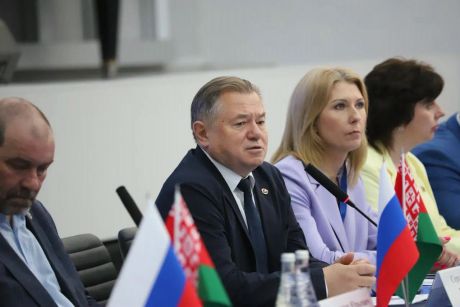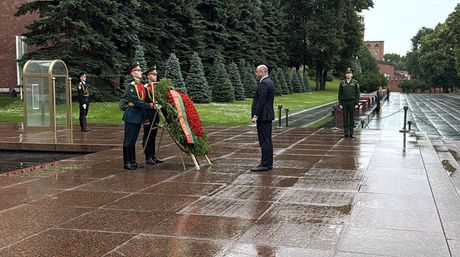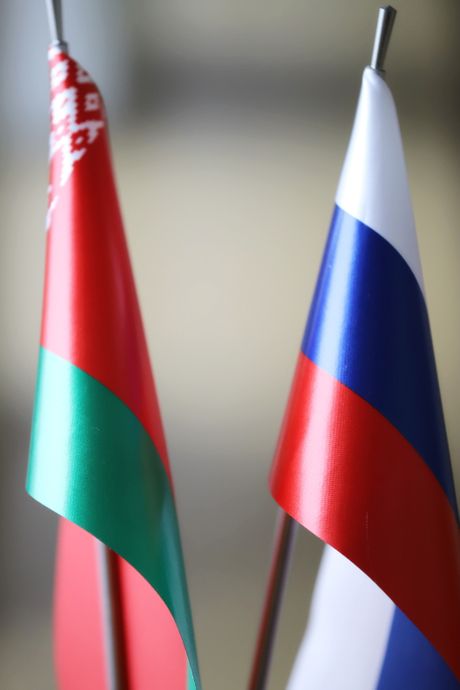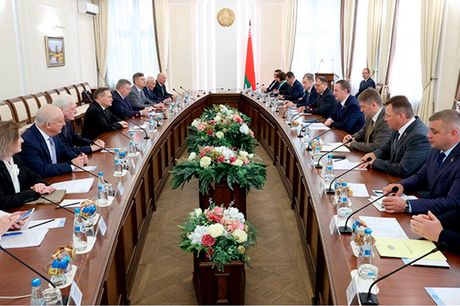Stolyarova: Belarus and Russia are implementing joint space programs
12:00, 14 April

Photo: Soyuz.by
In a special report by BELTA dedicated to the World Aviation and Cosmonautics Day, Deputy Chairman of the State Science and Technology Committee of Belarus Tatyana Stolyarova spoke about cooperation between Belarusian and Russian specialists in the space industry.
- Поделиться в Facebook
- Поделиться ВКонтакте
- Поделиться в Twitter
- How is the space industry developing in Belarus, and how can we assess our prospects?
- Space activity is an area of concentration of the most advanced achievements of scientific and technological progress. It acts as a locomotive for the development of information and communication technologies, microelectronics, mechanical engineering, medicine, agriculture, and contributes to the training of highly qualified personnel for high-tech areas. In accordance with the state scientific and technical program "Micro-and Nanoelectronics Industry" implemented in 2021-2025, in 2025 the production of newly mastered products is provided for 7 tasks, the results of which are also used in space conditions.
Belarus has established scientific and design organizations, specialized production facilities, built new factories and, most importantly, formed scientific schools and unique teams for the development of the industry. The results of the activities of organizations involved in the space industry indicate that their scientific and technological potential is not only preserved, but also multiplied. High-precision optoelectronic equipment, state-of-the-art microprocessor technology, integrated circuits, test equipment and much more are produced.
The space industry in our country is developing in close cooperation with Russia, mainly in accordance with the scientific and technical programs of the Union State. Eight such programs have already been implemented since 1999. Thanks to close cooperation, it was possible to create a space constellation of satellites and the corresponding infrastructure.
The information obtained from remote sensing of the Earth is used in our countries to prevent and eliminate the consequences of emergency situations, design and build roads, update the land information system, in law enforcement, environmental protection and other areas.
- What Union space programs are currently being implemented? How will they help you create new satellites?
- In 2024, we summed up the results of the implementation of the eighth scientific and technical program of the Union State "Integration-SG". Its goal was to increase the efficiency of processing remote sensing data and provide the results to users in Belarus and Russia. The implementation of the program's results will ensure a steady trend in integrating regulatory and technical requirements for space data turnover in Russia and Belarus, and expand the possibilities of using integrated technologies to provide consumers with information received from the Russian and Belarusian remote sensing groups. The results obtained will contribute to solving the problem of mass consumer access to inexpensive space information of the required quality and volume.
Currently, the transition to small-sized spacecraft for remote sensing of the Earth is one of the most urgent tasks in the space sector. The small-sized spacecraft weighs significantly less and makes it possible to launch not one spacecraft, but three or four satellites into orbit at a single launch.
The Union State's space science and technology program Complex-SG continues to be implemented in 2025. It is a continuation of the already implemented space projects of the Union State and is aimed at developing the basic elements of orbital and ground-based facilities in order to create multi-satellite groupings of small-sized spacecraft for observing the Earth's surface and near-Earth space.
The implementation of the Complex-SG program will allow us to ensure development in the field of instrument engineering related to the creation of small satellites, as well as to produce high-tech products on our territory, and train personnel for the space industry.
With the help of satellites, for example, we will be able to get more complete and up-to-date information about temperature anomalies, forest fires, including those approaching the border of our country. This will help to the Ministry of Emergency Situations units to stop the fire with minimal losses. Equally important, space-based observations of farmland will improve the quality of crop yield forecasts, and geological formations will improve the efficiency of mineral exploration.
- What will be the next allied space programs, and what results are planned to be achieved?
- Our scientists do not stop there. New projects of the Union State's space programs are being developed. For example, within the framework of the Resurs-SG program under development, it is planned to create new structural materials for small-sized spacecraft that can provide an increase in the active life of satellites by almost two times. Thanks to this program, it is planned to increase the standard service life of the satellite to 10 years (now - 5 years).
Another important topic discussed in the international community is space debris. Currently in development there is a program "Highway", which intersects with this topic. It will provide for the ability to assess the presence of a large number of objects in near-Earth space and track their movement. As a result, we will be able to track objects and predict the solution to the issue of space debris.
- What are the prospects of cooperation with Russia in the space sector for Belarus?
- The importance and necessity of developing the space industry is also indicated by the fact that in 2021 the first prizes of the Union State in the field of science and technology were awarded to two joint teams of authors from Belarus and Russia specifically on space topics. Namely, for the creation of the Belarusian Space System for Remote Sensing of the Earth and the Russian-Belarusian orbital constellation of satellites, for the development of highly efficient electromagnetic protection systems, as well as a new generation of sensors for space devices.
In addition, I would like to note that the country has identified priority areas of scientific, scientific-technical and innovative activities for 2026-2030. For the next five-year period, the decree of the head of state defines, among other things, the priority direction "space and aviation technologies". This indicates great prospects for the development of the high-tech and high-tech space industry.
Belarus and Russia are working together to better coordinate their activities in promising areas of cooperation, and find optimal and verified solutions to a number of issues, including the development of space activities. The existing competencies in the scientific and technical sphere in our countries contribute to strengthening our cooperation ties.






